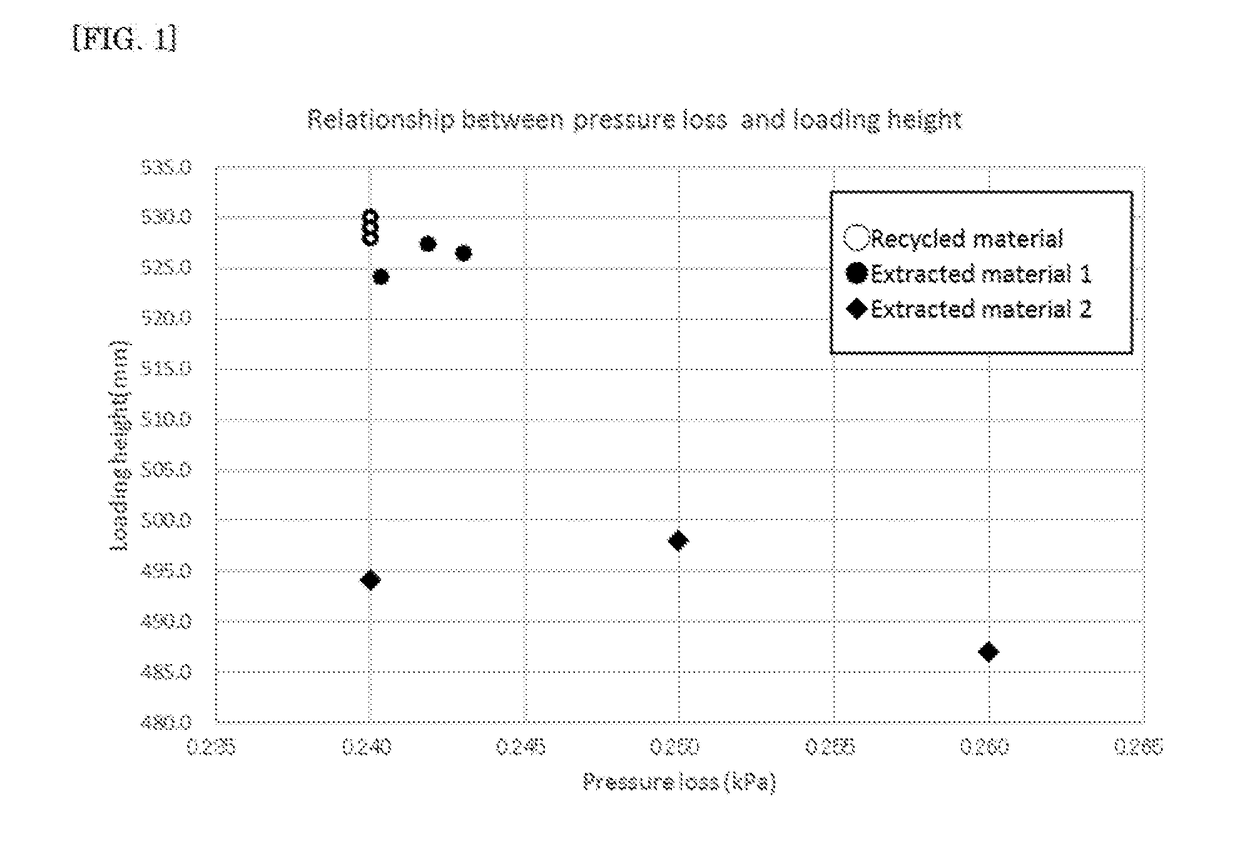Method for recovering inert material and method for producing acrylic acid using inert material recovered by said method
a technology of inert material and recovery method, which is applied in the direction of catalyst regeneration/reactivation, physical/chemical process catalyst, liquid cleaning, etc., can solve the problems of catalyst reaction tube and inert material blockage, runaway reaction, loss increase,
- Summary
- Abstract
- Description
- Claims
- Application Information
AI Technical Summary
Benefits of technology
Problems solved by technology
Method used
Image
Examples
examples
[0060]The present invention will now be specifically described by way of examples. The present invention is not intended to be limited to examples described below, and can also be carried out with appropriate modifications within the range adaptable to the present invention, and such modifications are included in the technical scope of the present invention. Note that the propylene conversion rate and the acrylic acid yield are calculated using the following equations:
Propylene conversion rate [mol %]=(the amount of reacted propylene in moles) / (the amount of supplied propylene in moles)×100
Acrylic acid yield [mol %]=(the amount of produced acrylic acid in moles) / (the amount of supplied propylene in moles)×100
[0061]
[0062]As the first-stage catalyst, a catalyst was prepared by extrusion molding of a catalyst component. The catalyst component had the following metal composition excluding oxygen and shape (average).
[0063]Mo12Bi1.1Fe0.9Co5.8Ni1.1W0.6Si2.0K0.6
[0064]First-stage catalyst 1...
PUM
| Property | Measurement | Unit |
|---|---|---|
| inner diameter | aaaaa | aaaaa |
| inner diameter | aaaaa | aaaaa |
| inner diameter | aaaaa | aaaaa |
Abstract
Description
Claims
Application Information
 Login to View More
Login to View More - R&D
- Intellectual Property
- Life Sciences
- Materials
- Tech Scout
- Unparalleled Data Quality
- Higher Quality Content
- 60% Fewer Hallucinations
Browse by: Latest US Patents, China's latest patents, Technical Efficacy Thesaurus, Application Domain, Technology Topic, Popular Technical Reports.
© 2025 PatSnap. All rights reserved.Legal|Privacy policy|Modern Slavery Act Transparency Statement|Sitemap|About US| Contact US: help@patsnap.com

